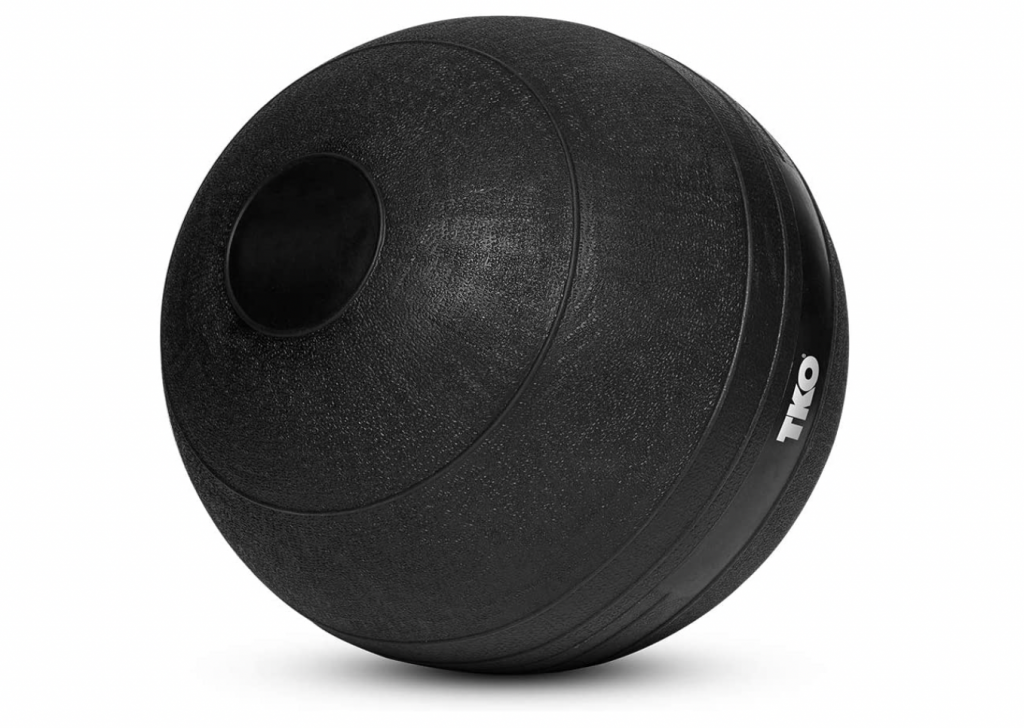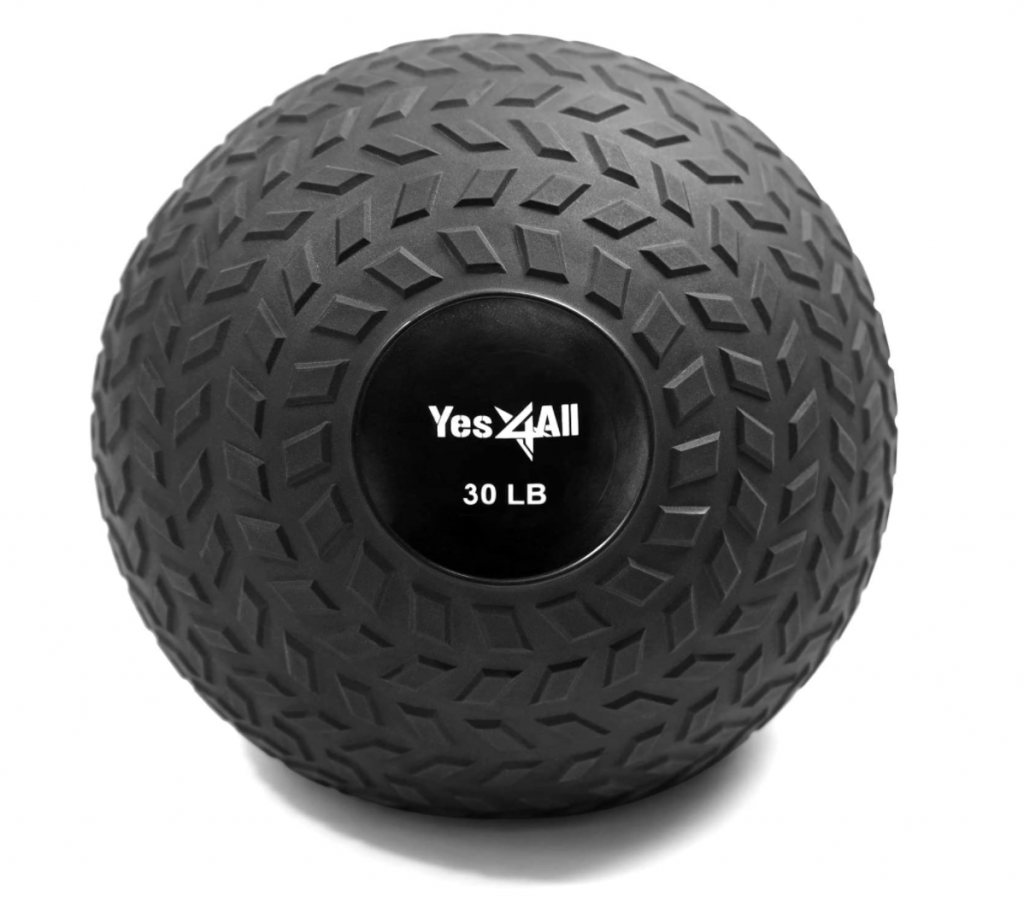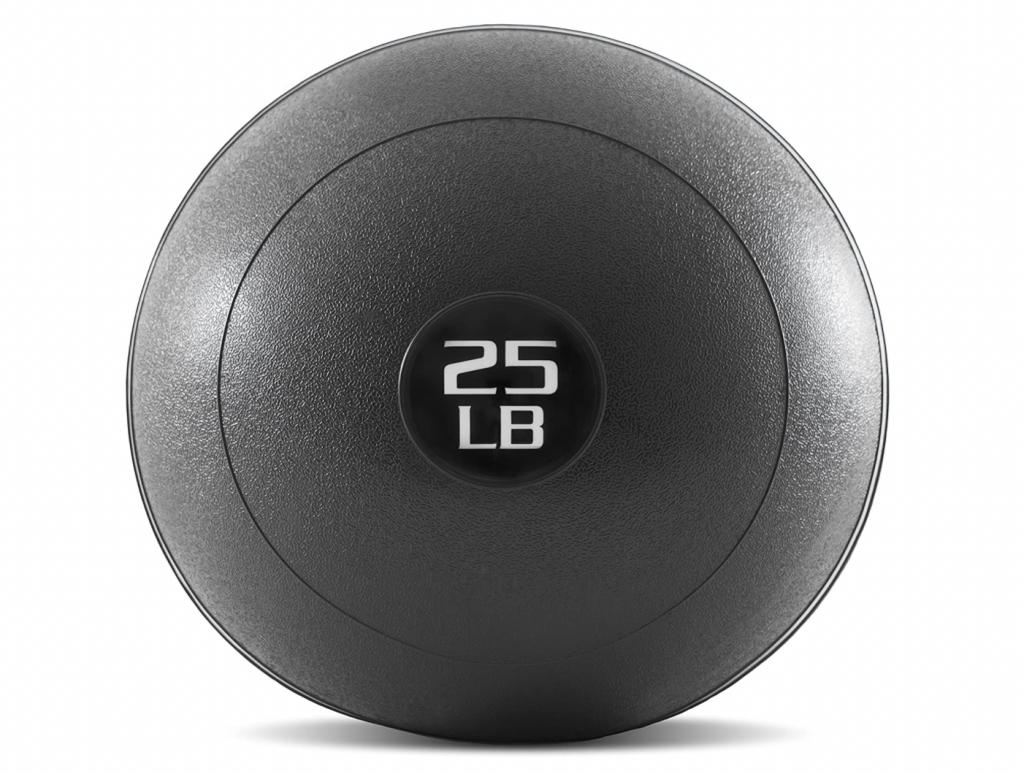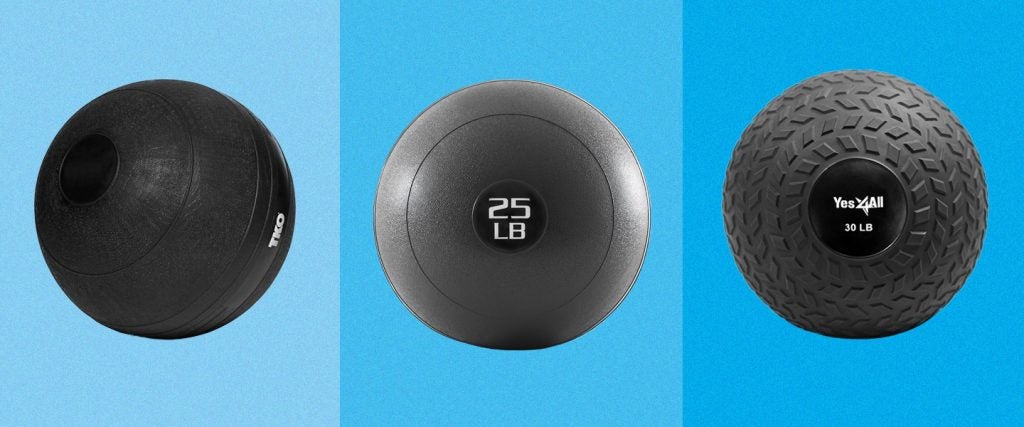Don’t be fooled by the many misnamed slam balls in existence. For the sake of search-engine hacking, numerous medicine balls — or other ball-shaped workout devices — are entered into online shopping-cart systems as “slam balls.” A true slam ball should have its impact totally, or at least predominantly, deadened upon impact with a stable surface, the most common being a floor or a wall. As legendary MMA coach Greg Jackson explained to me previously, slam balls are great for conditioning, but if they were able to bounce back and strike you in the face, the only thing being conditioned (or better put, broken) is your nose/jaw/teeth, and the exercise isn’t intended to be that hardcore.
So what use is a ball that doesn’t bounce? I’m glad you asked. A slam ball enables you to exert all of the force of your muscles in the service of propelling an object in a specified direction over and over again, as you can hurl the ball into the floor, catch it in the aftermath of a very tiny bounce and then repeat the ballistic throw. In short, you can reliably perform repeated movements with relatively heavy weights in ways that you never could with dumbbells, kettlebells or any other other heavy training device that isn’t designed to be thrown and then have its inertia halted.
Three Things to Consider When Buying a Slam Ball
1) Resilience: There isn’t much that can wear a product down faster than repeatedly bashing it into surfaces that have zero give to them. Even if your slam ball is designed with such collisions in mind, it isn’t going to last forever; so get the ball that you can extract the most usefulness out of before it needs to be put out to pasture.
2) Performance: Again, slam balls are intended to hit a surface and go dead. But in the world of fitness, “dead” has multiple meanings. Sometimes it can mean that the ball completely flattens out. Other times, it can mean that the ball still rises anywhere from two to eight inches off of the ground after impact, and that can make all the difference in the world with respect to its contribution to your momentum whenever you’re engaged in certain types of exercises.
3) Weight: The weight of the ball can make a massive difference in its training applications. Heavier balls are easier to project downward with force behind them since gravity will take over, but everything in between — including the lifting, carrying and redirecting of the ball — will increase in difficulty.
Now that we’ve got that squared away, let’s bust some balls…
Best Smooth Slam Ball: TKO Slam Ball

Why It’s a Slam Dunk: The TKO Slam Ball is the standard version of a slam ball, which means it possesses a sand-filled interior that eliminates the tendency of the ball to rebound in an emphatic way. All the same, it will bounce back from a wall just enough that it will return to its starting position if you’re standing just a few feet away from said wall. Similarly, it will hop just high enough for you to snag it out of the air and carry on with your movement if you slam it into the ground. This creates a natural prompt for you to continue your training, as long as you can hammer the ball into the floor fiercely enough for it to replicate its bounce.
Why You Might Want to Throw It Aside: The standard slam ball model has two potential weaknesses if you’re particularly exacting about the way you train. First, its smooth exterior may become increasingly slippery as your hands become sweaty. Second, it won’t immediately go as dead as a potato sack once it strikes the ground. But if you’re looking for something that will, keep reading.
Best Tread Slam Ball: Yes4All Slam Ball

Why It’s a Slam Dunk: The Yes4All Slam Ball has a grip-enhancing texture and pattern etched directly into its surface, which is beneficial in circumstances when you begin to perspire. It vastly reduces the ball’s potential to slip out of your hands and interrupt your training at inopportune moments. Also, just like the slam balls with smooth surfaces, it still provides you with a tiny hop to aid your workout.
Why You Might Want to Throw It Aside: Some people are very persnickety about the grasp they’re able to attain on their balls, and I’m not here to pass judgment. If you prefer not to feel a tirelike texture each time you grab a slam ball in the midst of its tiny hop, you’d probably be better off with a smooth one.
Best Dead-Weight Slam Ball: ProsourceFit Slam Ball

Why It’s a Slam Dunk: When the ProsourceFit Slam Ball hits the ground (or wall), it goes completely dead. You have nothing to fear in terms of it bouncing back toward you, or rolling away from you. In that sense, it’s the most predictable form of slam ball there is, because no amount of force you administer to the throw is going to make a difference in its response after it strikes.
Why You Might Want to Throw It Aside: Sometimes something sounds like a great idea until you encounter it in real life, and then you’re stuck contending with it forever. Such is the case with dead-weight slam balls. If you’re used to a ball’s encouraging baby hop that enables you to scoop it out of the air and lift it back up more easily, being obligated to repeatedly lift the full weight of the ball off the ground may prove to be too much of an annoyance.
Dead-weight slam balls also have a tendency to lose their round shape very quickly, and soon resemble misshapen rubber ovals. I’m not saying this is necessarily a bad thing, but it’s something you should be prepared for.

